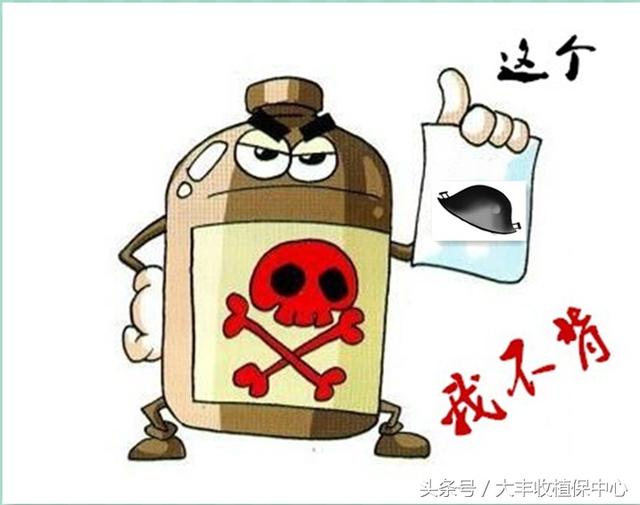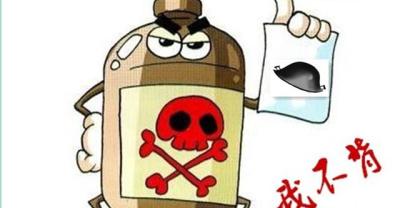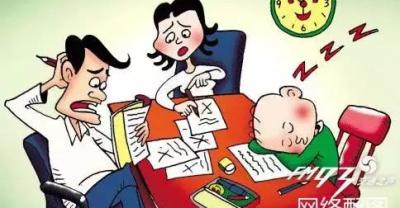It doesn't work. It's a fake pesticide? That's because you didn't do these three things (recommended by good articles)
Introduction to Little Miss Cui
Some people say that many pesticides have no effect, and some people take the blame for "fake medicine" because of their poor efficacy. It's really sad to pretend to know if you don't know. Why is it effective after others fight, but not effective after you fight? Just because they are smarter than you, they have achieved the following three points!

First, drug selection
1. Choose the right medicine
The factors that affect the efficacy are not only related to the composition of pesticides, but also to the physical and chemical properties, dosage forms and additives added in pesticide processing.
In pesticides with different ingredients, pesticides with the same dosage form and different content, there will be differences in efficacy between pesticides with the same content and different dosage forms, and different companies have different production capacity. Of course, the efficacy will also be different!
Then how to choose?
First, it depends on experience (using medicine based on the experience of oneself and others); second, it depends on consultation (ask more agricultural technicians and more experienced people); third, it depends on judgment (to judge whether the advice given by others can be taken? Fumble and judge for yourself.
2. Choose the right medicine for disease and insect
If you want to prevent disease:
First of all, we should prescribe drugs to the symptoms, know what diseases should be used, do not use drugs indiscriminately, recognize fungal diseases and bacterial diseases, and distinguish the use of drugs.
Secondly, to rotate the use of drugs, do not blindly use the same medicine, should pay attention to the alternate use of different pesticides.
If it is insect prevention:
First of all, we should drug the insects, know what to use, and kill adults, eggs, larvae or nymphs, so as to reduce the source of insects.
Secondly, it is necessary to rotate the use of drugs, the drug resistance of pests is generally high, so do not blindly use a single agent, should pay attention to the alternate use of different pesticides, but also mixed pesticides to increase the control effect.
Second, choose the environment for drug administration
1. Determine according to the change of temperature
Whether they are plants, pests or germs, they all have a suitable active temperature, about 20-30 ℃, 25 ℃ is the best, at this time, spraying is not only safe for crops, but also effective for diseases and caterpillars in the active period.
In hot weather, medication should be given before 10:00 in the morning and after 4 o'clock in the afternoon.
If the weather is cool, it should be administered after 10:00 in the morning and before 2pm.
Such as in the greenhouse in winter and spring, it is best to take medicine in the morning when the weather is warm.
2. Determine according to the change of humidity
The drug solution will be affected in many ways from depositing on the diseases and insect pests to spreading the uniform drug film, and the humidity of the air has a great influence.
If the air humidity is too high, the deposited liquid will become larger droplets, and then under the influence of gravity, it will be deposited to the lower part of the plant, resulting in drug damage.
If the air humidity is too small, the liquid is easy to evaporate, resulting in fewer drugs that can come into contact with the target, thus reducing the efficacy, and in serious cases, there will be burning drug spots.
(the little sister of the bumper harvest concluded: the environment for medication should be kept ventilated.
For vegetables in the open field, some leaves and branches of the plant can be properly trimmed to keep the field ventilated.
For vegetables in the greenhouse, if they are drugged in the morning, they should be given medicine after a certain period of time; if they are drugged in the afternoon, they should be administered half an hour or an hour before the wind is closed. )
3. Determine according to the characteristics of diseases and insect pests.
For pests:
For example, control whitefly (fly away as soon as you encounter it), apply medicine in the morning when the dew is not dry, control thrips, apply medicine in the morning when flowers bloom, control leaf thrips, apply medicine in the evening or evening, and so on.
For diseases:
For example, the prevention and control of anthrax, powdery mildew, epidemic disease, downy mildew, anthrax, etc., should be administered in time before rain, before watering, before cloudy days, and at the initial stage of the disease (because many diseases are mainly spread by running water, wind and rain, and there is no time to cry when they are seriously ill. Third, choose the method of administration.
Before taking medicine
1. Clean up the source of the disease
Cleaning up diseased leaves, diseased branches, diseased fruits and even diseased plants (the source of infection of most diseases) and burning them out of the field will naturally have a better effect.
(pay attention to cleaning up the remains of diseased plants in the field)
2. Dilution of pesticides should be appropriate
The drug should be diluted according to the instructions, and can be slightly increased according to the severity of the occurrence of diseases and insect pests, but double use is not recommended. If you feel that the efficacy is not good, on the one hand, you can rotate the pesticides of another mechanism, on the other hand, you can optimize your own medication technology.

3. the mixture of pesticides should be reasonable.
For example, in the early stage of the disease, use protective fungicides + inhaled therapeutic fungicides.
When killing insects, choose the mixture of insecticides that kill eggs and adults, and so on.
When taking medicine
1. Master the techniques of drug administration.
For diseases and pests that are often harmful to a certain part of the plant, emphasis should be placed on this part of the plant.
For example, if the root is harmful, it is best to use irrigation method.
The method of spraying or brushing is used for the damage of stem parts.
Leaf harm should be done to spray both sides evenly and thoughtfully, focusing on the back of the leaf.
2. Grasp the distance and speed of administration.
For example, the nozzle of the knapsack electric sprayer should be kept about 30-50 centimeters with the target, while the motorized sprayer should be kept at about 1 meter.
When people walk slowly, the medicine solution is easy to connect with tablets, and if they walk fast, some parts will not be able to get the medicine, so it is necessary to grasp the speed of walking and find a routine that suits you.
3. Adjust the size of drug droplets
The suitable droplet size is adjusted according to the performance of the sprayer and its nozzle.
Smoke machine can be used to control diseases and tiny pests such as aphids and whitefly in greenhouse vegetables.
For open-field vegetables to control diseases and insect pests, it is necessary to choose a sprayer with relatively large droplets.
After administration of medicine
Pay close attention to the development of diseases and insect pests
After a day or two of medication, it is necessary to inspect the degree of pest control in the field in time, so as to determine whether it is necessary to take drugs again, what drugs to take, and so on.
Note: the above content is for reference only! If you have better suggestions, or different opinions, welcome to share! )
- Prev

The prevention and control method of strawberry root rot with agricultural pesticides! The cause of strawberry root rot!
Author: strawberry planting Union 1. Strawberry root rot after the occurrence of strawberry root rot, the root is white. Similar to the symptoms of retting root disease. After the underground root is infected by germs.
- Next

Accompany the child to do her homework, my mother in Yiwu was out of control, and my father drank pesticides directly!
"Doctor, doctor, come out and help me." At about 6: 30 the night before last, a tearful middle-aged lady rushed into Yiwu Fuyuan Hospital.
Related
- Fuxing push coffee new agricultural production and marketing class: lack of small-scale processing plants
- Jujube rice field leisure farm deep ploughing Yilan for five years to create a space for organic food and play
- Nongyu Farm-A trial of organic papaya for brave women with advanced technology
- Four points for attention in the prevention and control of diseases and insect pests of edible fungi
- How to add nutrient solution to Edible Fungi
- Is there any good way to control edible fungus mites?
- Open Inoculation Technology of Edible Fungi
- Is there any clever way to use fertilizer for edible fungus in winter?
- What agents are used to kill the pathogens of edible fungi in the mushroom shed?
- Rapid drying of Edible Fungi

